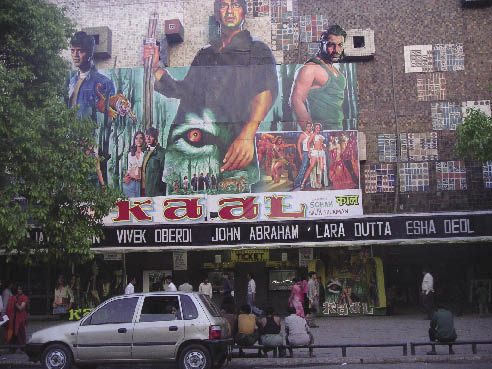| India Through the Eyes of a Chinese Journalist
By TANG LU
If not for my in-depth exchanges with local Indians and the intimate understanding I have gained of Indian society, my impressions of the Indian subcontinent would be as superficial as those of the majority of Chinese – that it is a place with fewer skyscrapers and international shopping centers than China, more beggars and poverty-stricken people, narrower roads, and an overwhelmingly chaotic and polluted urban environment. India is also, according to the limited Chinese understanding, a software giant, all Indians speak English, Bollywood films are no more than simple love stories interspersed with song and dance sequences, and Indian trains are always packed to over-capacity, with people sitting on the roof and trying to board while the train is moving. Chinese people also perceive India as a large country bent on competing with China in all respects. All of these impressions, however, are based on either Chinese or Indian media coverage. Few Chinese people have actually been to India.
I also held these misconceptions until I actually lived there and came to know more about Indian society. It was then that I realized how media descriptions of India are less than inaccurate, or at best incomplete. I think one must live in a country for at least one year to fully understand a nation.
 |
| A poster for Kaal, an Indian horror film, on display outside a cinema at Connaught Place in New Delhi. |
Turtle vs. Bunny
When my fellow researchers and I attended a meeting in Kochi in 2008 we could see from our hotel window the work in progress on expanding a nearby multi-story building. An Indian friend told me that the project had been going on for more than three years owing to problems with hiring construction workers. We were astonished, knowing that in China such project could be finished within six months.
India’s pace when building infrastructure such as roads and bridges is indeed relatively slow, and has seriously affected foreign investment. The stipulation in India’s overly rigid labor law that a certain procedure must be followed before Indian workers can be fired also makes it difficult to attract foreign capital into the subcontinent’s labor-intensive industries. But Indians have their own way of rationalizing this problem. “India’s democratic system includes the protection of every citizen’s rights. Although reforms to the labor law are needed, not a single ruling party in India would dare run the risk of mass unemployment. We hope that India will develop labor intensive manufacturing industries in the same way as China, but believe we should work on it step-by-step. That many people compare India to an elephant hence seems reasonable. We do move ‘slower’ than China does, but advance steadily,” an Indian friend of mine once told me.
Western media like to compare competitiveness between China and India to a battle between a dragon and an elephant. It struck me as funny that Indian media are more inclined to compare it to a race between a turtle and a bunny, because to their way of thinking, India moves at a turtle’s steadier pace.
“Vote for Me”
While living in India I traveled extensively in remote rural areas to see first-hand local farmers’ living conditions. But it was not until assigned to the government of Baishui County in Shaanxi Province, an underdeveloped rural area of China, that I saw the fundamental differences between life in the countryside of China and of India. In China’s villages, banners saying, “To get rich, first build roads” and “The family planning policy is great and girl children are as good as boys” are ubiquitous. Most of the posters seen in India’s rural areas, however, bear the slogan “vote for me” beneath the logos of various political parties. A visiting Indian expert in Baishui County told me that government cadres in China personally understand the needs of farmers and offer their help, whereas most Indian cadres think about farmers only at times of elections when they need their votes.
But something that distinguished India from China was the active role NGOs play in helping local farmers. There are many in India that do all they can to help farmers acquire new knowledge and practical farming techniques. When natural disasters such as tsunamis or earthquakes occur, these NGOs immediately step forward to support and give help to the poor. I personally witnessed how their warm-hearted efforts made a significant difference to the material and cultural lives of local farmers.
|
